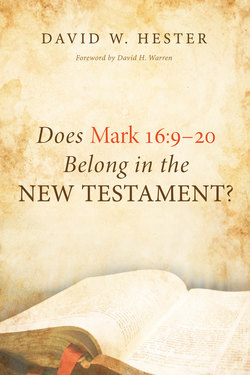Описание книги
For almost fifty years, much has been written concerning Mark 16:9-20. During the same time period, evidence once counted against Mark 16:9-20 was shown to be otherwise. In this study, David W. Hester surveys modern scholarship (1965-2011) surrounding the passage. He examines the passage itself–the external evidence, with particular attention paid to the manuscripts and the patristics, especially those of the second and third centuries; and the internal evidence, featuring details that are problematic as well as those that favor Markan authorship. Finally, a proposal concerning the origin of the passage is presented. The first edition of Mark's Gospel ended at 16:8, resulting in the manuscript tradition that omits the passage, but this was not his intended ending. Later, his associates attached Mark's notes and published a second edition of the Gospel with the last twelve verses. This led to its inclusion. Given that the passage is cited by second- and third-century witnesses and attributed to Mark, along with the biblical prohibition against adding to or taking from Scripture, it is doubtful that an anonymous second-century author could have been successful in adding his own composition and it being widely accepted by the early church.
